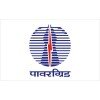Field Engineer
200+ Field Engineer Interview Questions and Answers

Asked in Jio

Q. What is insulator and conductors and semiconductors
Insulators, conductors, and semiconductors are materials that have different abilities to conduct electricity.
Insulators are materials that do not conduct electricity well, such as rubber or glass.
Conductors are materials that conduct electricity well, such as copper or aluminum.
Semiconductors are materials that have properties of both insulators and conductors, such as silicon or germanium.
The ability of a material to conduct electricity is determined by its atomic structure...read more

Asked in Power Grid Corporation of India

Q. What should be the tan Delta value of electrical equipment, for example, a transformer?
The tan Delta value of electrical equipment should be as low as possible.
Tan Delta is a measure of the dielectric losses in electrical equipment.
A low tan Delta value indicates that the equipment has good insulation properties.
The tan Delta value can be affected by factors such as temperature, moisture, and aging of the equipment.
For transformers, a typical tan Delta value is around 0.001 or lower.
Field Engineer Interview Questions and Answers for Freshers

Asked in Power Grid Corporation of India

Q. What is the ground clearance of a 400KV transmission line?
The ground clearance of a 400KV transmission line varies depending on various factors.
The ground clearance of a transmission line is the vertical distance between the lowest point of the conductor and the ground.
The ground clearance is determined based on safety regulations and requirements.
Factors that influence the ground clearance include terrain, vegetation, and proximity to buildings or roads.
In hilly areas, the ground clearance may be higher to account for uneven terrai...read more
Asked in FQM Trident

Q. Why are transformers rated in KVA?
Transformers are rated in KVA because it represents the apparent power they can handle.
KVA stands for kilovolt-ampere, which is a unit of apparent power.
Transformers are designed to handle a certain amount of power, and the KVA rating indicates their capacity.
The KVA rating takes into account both the voltage and current that the transformer can handle.
It helps in determining the appropriate size and capacity of the transformer for a given application.
For example, a transform...read more

Asked in Prompt Personnel

Q. What is telecommunication
Telecommunication is the transmission of information over a distance for the purpose of communication.
Telecommunication involves the use of electronic devices to transmit information
It can be done through various means such as radio, television, telephone, internet, etc.
Examples include sending text messages, making phone calls, watching TV, browsing the internet, etc.

Asked in Power Grid Corporation of India

Q. What should be the pressure (in bars) of the SF6 gas used in a circuit breaker chamber?
The SF6 gas used for Ckt breaker chamber should be maintained at a pressure of around 5-7 bar.
The SF6 gas in the circuit breaker chamber should be maintained at a specific pressure to ensure proper functioning.
The recommended pressure for SF6 gas in the circuit breaker chamber is typically between 5 and 7 bar.
Maintaining the correct pressure helps in extinguishing the arc during circuit interruption.
Too low or too high pressure can affect the performance and reliability of th...read more
Field Engineer Jobs




Asked in Reliance Communications

Q. What type of transformer is used at telecom tower sites?
The type of transformer used in telecom tower sites is typically a step-down transformer.
Step-down transformers are used to reduce the high voltage from the power grid to a lower voltage suitable for telecom equipment.
These transformers are usually single-phase and have a power rating of a few kilovolt-amperes (kVA).
They are designed to provide a stable and reliable power supply to the telecom equipment at the tower site.
Examples of step-down transformers used in telecom towe...read more

Asked in PhiStream Consulting

Q. How does ice engine work? How to calculate and increase efficiency of IC Engine? Stress analysis? And a lot of questions from liquid handling and behaviour How the petroleum products is refined? How the petrole...
read moreAnswering questions related to engines, petroleum products, and liquid handling
An ice engine works by using the expansion of frozen gas to generate power
Efficiency of IC engine can be calculated using the formula: Efficiency = (Work output / Heat input) x 100%
Stress analysis involves determining the stresses and strains in a material or structure under load
Petroleum products are refined through a process called fractional distillation
Petroleum products are categorized into th...read more
Share interview questions and help millions of jobseekers 🌟


Asked in Power Grid Corporation of India

Q. What is the basis setting for REF protection for a transformer?
The Basis setting of REF protection for a transformer should be determined based on the transformer's characteristics and the system requirements.
The basis setting of REF (Restricted Earth Fault) protection for a transformer is typically determined by considering the transformer's winding configuration, impedance, and the system's fault level.
The setting should be chosen to ensure that the protection operates reliably for internal faults while avoiding unnecessary tripping fo...read more

Asked in Power Grid Corporation of India

Q. What are the main differences between AIS and GIS substations?
AIS and GIS substations differ in their construction and insulation methods.
AIS (Air Insulated Substation) uses air as the insulation medium, while GIS (Gas Insulated Substation) uses SF6 gas.
AIS substations require larger land areas compared to GIS substations.
GIS substations are more compact and can be installed in urban areas where space is limited.
AIS substations are more susceptible to environmental factors like pollution and weather conditions.
GIS substations offer high...read more

Asked in Power Grid Corporation of India

Q. Why are ACSR conductors widely used in major metropolitan cities?
ACSRinvar conductors are widely used in metro principal cities due to their high strength and low thermal expansion.
ACSRinvar conductors have a high tensile strength, making them suitable for long-distance transmission lines in metro cities.
They have a low coefficient of thermal expansion, which helps in reducing sagging of the conductors and maintaining power transmission efficiency.
The use of ACSRinvar conductors in metro principal cities ensures reliable and uninterrupted ...read more

Asked in Power Grid Corporation of India

Q. Why are star-star zero phase shift transformer windings used?
Star-star zero phase shift transformer windings are used to provide a balanced three-phase output with zero phase shift between primary and secondary voltages.
Star-star zero phase shift transformer windings are commonly used in power distribution systems.
They are used to supply power to three-phase loads such as motors, generators, and transformers.
The windings are designed in such a way that the voltages in the primary and secondary sides are in phase with each other.
This co...read more

Asked in Nayara Energy

Q. How do you handle contractors to maintain good quality of work?
Maintaining good quality of work with contractors requires clear communication, expectations, and regular inspections.
Establish clear expectations for quality standards and communicate them to the contractor
Regularly inspect the work being done to ensure it meets the established standards
Provide feedback to the contractor on areas that need improvement
Hold the contractor accountable for any subpar work and require them to fix it
Consider offering incentives for exceptional wor...read more

Asked in Schlumberger

Q. What do you mean by Oil exploration and production?
Oil exploration and production refers to the process of searching for and extracting crude oil from the earth.
Oil exploration involves identifying potential oil reserves through geological surveys and drilling exploratory wells
Oil production involves drilling production wells and extracting crude oil from the reservoirs
The extracted oil is then transported to refineries for processing into various petroleum products
Oil exploration and production is a complex and expensive pro...read more

Asked in Jio

Q. What is transistor and how it's work
A transistor is a semiconductor device used to amplify or switch electronic signals and power.
Transistors are made of semiconductor materials like silicon or germanium.
They have three layers - emitter, base, and collector.
Transistors can be used as amplifiers or switches in electronic circuits.
They work by controlling the flow of electrons through the base layer.
Examples of transistor applications include radios, computers, and televisions.
Asked in Petroexcel Technology Services

Q. Explanation of 2phase and 3phase separator operation, compressor operation, pump operation , P&ID ,commissioning and start up
Explanation of 2phase and 3phase separator operation, compressor operation, pump operation, P&ID, commissioning, and start-up.
2phase separator separates gas and liquid phases, while 3phase separator separates gas, oil, and water phases.
Compressor increases the pressure of a gas to move it through a pipeline or process.
Pump transfers fluids by increasing their pressure.
P&ID (Piping and Instrumentation Diagram) is a schematic representation of a process system.
Commissioning is ...read more

Asked in Power Grid Corporation of India

Q. Why are vibration dampers used with conductors?
Vibration dampers are used with conductors to reduce the risk of fatigue failure and damage caused by wind-induced vibrations.
Vibration dampers absorb and dissipate the energy generated by wind-induced vibrations in conductors.
They help to reduce the risk of fatigue failure and damage to the conductor and associated hardware.
Vibration dampers are typically installed at regular intervals along the length of the conductor.
They can be in the form of spiral-shaped devices, weight...read more

Asked in Wapcos

Q. In what ways do you control costs while maintaining the desired level of quality in electrical engineering projects?
To control costs while maintaining quality in electrical engineering projects, one can focus on efficient project planning, effective resource allocation, and continuous monitoring and optimization.
Develop a detailed project plan that outlines the scope, timeline, and budget constraints.
Identify potential cost-saving opportunities such as using energy-efficient components or optimizing design to reduce material usage.
Allocate resources effectively by matching the skills and e...read more

Asked in Jio

Q. What is an integrated circuit and what are its uses?
Integrated circuit is a miniaturized electronic circuit consisting of active and passive components on a single semiconductor chip.
ICs are used in almost all electronic devices, from smartphones to computers to cars.
They are used to perform a variety of functions, such as amplification, switching, and signal processing.
ICs have revolutionized the electronics industry by making devices smaller, faster, and more efficient.
There are different types of ICs, such as microprocessor...read more

Asked in Jio

Q. What is an LED and how does it work?
LED stands for Light Emitting Diode. It is a semiconductor device that emits light when an electric current is passed through it.
LEDs are energy-efficient and have a longer lifespan compared to traditional incandescent bulbs.
They are commonly used in electronic devices, traffic lights, and automotive lighting.
LEDs work by converting electrical energy into light energy through a process called electroluminescence.
They come in different colors and can be used for decorative pur...read more

Asked in Jio

Q. What is photo diode and photo emissivity
A photo diode is a semiconductor device that converts light into electrical current. Photo emissivity is the ability of a material to emit electrons when exposed to light.
Photo diodes are commonly used in optical communication systems and light sensors.
Photo emissivity is important in the design of photoelectric devices such as solar cells and photomultiplier tubes.
The efficiency of a photoelectric device depends on the photo emissivity of the material used.
Photo emissivity i...read more

Asked in Wapcos

Q. How do you communicate technical information about electrical systems to clients or stakeholders who may not have a technical background?
To communicate technical information about electrical systems to non-technical stakeholders, use simple language, visual aids, analogies, and real-life examples.
Use simple and non-technical language to explain complex concepts
Utilize visual aids such as diagrams, charts, or presentations to enhance understanding
Draw analogies or comparisons to familiar objects or situations
Provide real-life examples or case studies to illustrate the practical applications
Encourage questions a...read more

Asked in Medhaj Techno Concept

Q. What is the impact on the phase angle when the frequency of the voltage applied to a series RC circuit is increased?
Phase angle decreases as frequency increases in a series RC circuit.
As frequency increases, the capacitive reactance decreases, leading to a decrease in phase angle.
At low frequencies, the capacitive reactance is high, causing a larger phase angle.
At high frequencies, the capacitive reactance is low, resulting in a smaller phase angle.

Asked in Ceragon Networks

Q. If you are in a room with two cables, how do you identify which cable carries AC voltage and which carries DC current?
Identify AC and DC cables using multimeter, visual inspection, and cable markings.
Use a multimeter: Set it to measure voltage; AC will show a sine wave, while DC will show a steady value.
Check for cable markings: AC cables often have 'AC' or '~' symbols, while DC cables may have 'DC' or '-' symbols.
Look at the connectors: AC connectors are usually round and may have a polarized design, while DC connectors are often barrel-shaped.
Observe the application: AC is commonly used fo...read more

Asked in Nelco

Q. How would you connect 12 batteries to produce the required output, depending on the battery output?
To connect 12 batteries for required output, connect them in series or parallel depending on the battery output.
Check the voltage and current output of each battery
If the batteries have the same voltage output, connect them in parallel to increase the current output
If the batteries have different voltage output, connect them in series to increase the voltage output
Use a battery management system to ensure proper charging and discharging of the batteries

Asked in Power Grid Corporation of India

Q. What is the main function of a Line Arrester in a substation?
The main function of LA in a substation is to protect electrical equipment from lightning strikes.
LA stands for Lightning Arrester.
It is installed in substations to divert lightning strikes away from sensitive equipment.
LA provides a low-impedance path for lightning current to flow to the ground.
It helps in preventing damage to transformers, circuit breakers, and other electrical devices.
LA operates by ionizing the air around it, creating a conductive path for lightning curre...read more

Asked in Aarvee Associates

Q. What are the full forms of DI and HDPE pipes in water supply?
DI stands for Ductile Iron and HDPE stands for High-Density Polyethylene, both used in water supply systems.
DI pipes are made from ductile iron, known for strength and durability.
HDPE pipes are made from high-density polyethylene, offering flexibility and resistance to corrosion.
DI pipes are often used in municipal water supply systems due to their robustness.
HDPE pipes are commonly used for underground water distribution due to their lightweight and ease of installation.
Both...read more

Asked in Medhaj Techno Concept

Q. If the frequency of the voltage applied to a series RC circuit is increased, does the phase angle decrease?
Yes, as the frequency of the voltage applied to a series RC circuit is increased, the phase angle decreases.
Increasing frequency means the reactance of the capacitor decreases, leading to a decrease in the phase angle.
At very high frequencies, the capacitor acts like a short circuit, causing the phase angle to approach zero.
This phenomenon is important in AC circuits and signal processing applications.

Asked in Schlumberger

Q. What is the URL of the Schlumberger website?
The Schlumberger website URL is www.slb.com.
www.slb.com is the URL for Schlumberger website
The website provides information about the company's products and services
It also has a careers section for job seekers

Asked in Wapcos

Q. How do you conduct quality assessments and inspections during various project phases?
Quality assessments and inspections are conducted during various project phases to ensure adherence to standards and identify any issues.
Develop a quality assurance plan that outlines the objectives, criteria, and methods for assessments and inspections.
Conduct regular inspections and audits to verify compliance with specifications, codes, and regulations.
Use checklists and standardized procedures to ensure consistency and thoroughness in assessments.
Perform inspections at ke...read more
Interview Questions of Similar Designations
Interview Experiences of Popular Companies





Top Interview Questions for Field Engineer Related Skills

Calculate your in-hand salary
Confused about how your in-hand salary is calculated? Enter your annual salary (CTC) and get your in-hand salary


Reviews
Interviews
Salaries
Users










